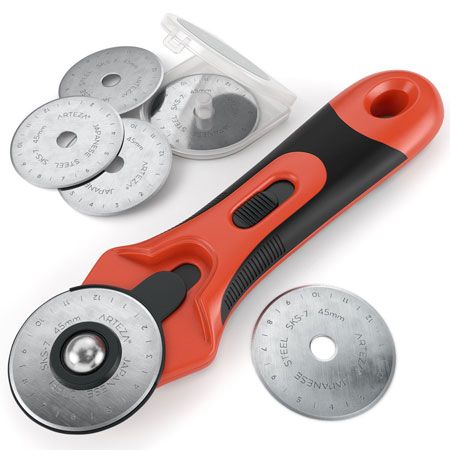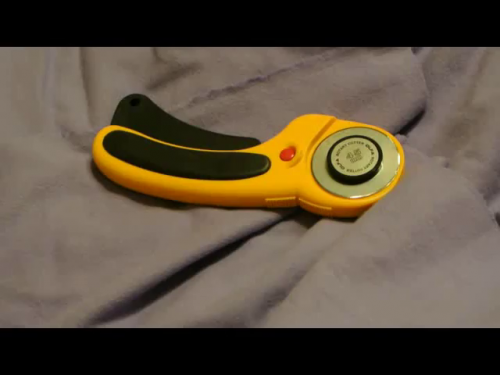What is a rotary cutter and tips for rotary cutting?A Story by Shauna AllenYou can apply different sizes of blades on rotary cutters. Some are designed to cut straight lines and can create wavy edges, zigzag edges are special effect edges. This innovative tool comes handy inQuilters to cut cloth material generally use rotary cutters. The tool has a circular blade that rotates and thus the name. Rotary cutters are found in different sizes, the smaller blades are used to cut corners while the larger blades are used to cut straight lines. When you require cutting a bunch of fabric of same size, you can pile the different colored or single fabric one above the other and apply the tool to obtain same sizes of fabric. You can apply different sizes of blades on rotary cutters. Some are designed to cut straight lines and can create wavy edges, zigzag edges are special effect edges. This innovative tool comes handy in many textile shops as well as tailoring units. It is not possible to cut these fabrics into desired shapes with hand scissors and if done, it may lead to Carpel tunnel syndrome.
The tool saves more time for quilters who involve in extensive factory activities. The rotary cutter sizes range in diameters from 18mm to 60mm. The small cutters are ideal for cutting curves while the large cutters can cut layers of fabric at a time. The design of the tool is very simple with protective handles at the bottom. The blade is suspended on the top of the handles by means of a nut that securely holds the blade. The nut has to be adjusted properly for free turning of the blade during different sessions of cutting. When it comes to working with tools that feature sharp blades, it is important that the tool is provided with a safety features. This feature is available in the electric rotary cutter where the blade retracts when you lower the tool in order to prevent accidents. The rotary cutters should be applied to the fabric with a cutting mat underneath. It should also be accompanied by a ruler that directs the rotary fabric cutter in a straight line. Initially, the rotary cutters had only straight cutting edges and now you can see the variety of edges that add a unique flair to the quilts.
Quilt patterns involve squares, rectangles, triangles and even strips of fabric, which take more time to cut with fabric cutting scissors. A rotary cutter saves a lot of time in cutting and also adds a unique style to the fabric. If you have any plans of starting your own fabric designing industry, it is better you learn the application of tool by cutting through scrap fabric from your local craft or quilt shop. Olfa and Fiskars are the two famous manufactures that design rotary cutters with good features. Some hand driven rotary cutters feature latches that move front and back to cover or uncover the blade. Latches are designed differently in different rotary cutters and you may find some of them difficult to handle if you have carpal tunnel syndrome or arthritis. At present many manufacturers make them with the automatic closing feature. No matter whatever rotary cutter you buy, but buy it seeing the safety features. Follow the manual instructions for replacing the blades and check for proper retraction of the blade. © 2017 Shauna AllenAuthor's Note
|
Stats
305 Views
Added on November 12, 2017 Last Updated on November 12, 2017 Tags: rotary cutter, fabric, cutting tools Author
|



 Flag Writing
Flag Writing